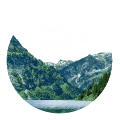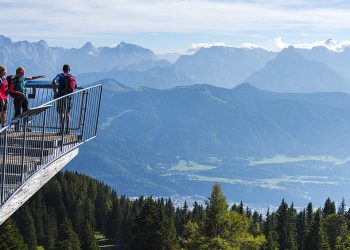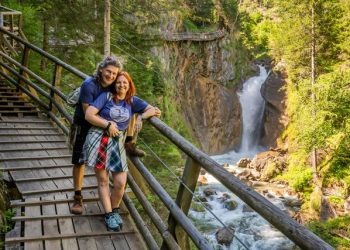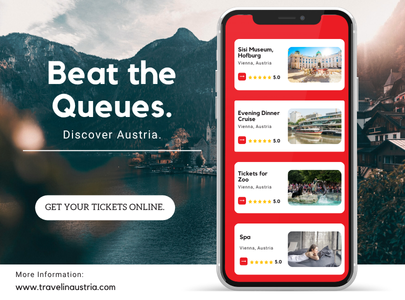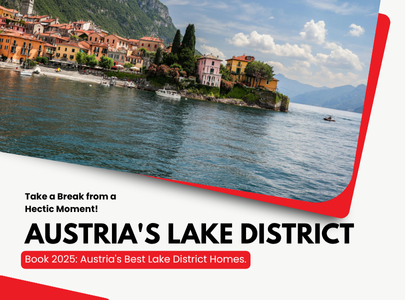Settlement in the Turrach mountains area (pronounced Turracher-höhe in German) began only in the 17th century when essential minerals were found in the area and mining began. The alpine road was only opened during the 20th century and is named the same as the region – Turracher-höhe. The road connects the Salzburg region with Carinthia and partly passes at a high altitude between the mountain peaks. The road number is B95 and it is called Turracher Strasse.
The main village is called Turrach. It is located at an altitude of about 1,763 meters above sea level and has a permanent population of about 100 residents. For a long time, the village had only small farms and guesthouses for the miners and loggers who worked in the mines. Today, the village has developed, especially due to the tourists who visit it, and you can find two luxury hotels and about 40 small hotels and guesthouses (you can find a list of recommended accommodations in the area here).
It’s interesting to know that the small village of Turrach is divided between the two states – Styria and Carinthia. The northern part of the village belongs to Styria and the southern part belongs to Carinthia. If you want to receive mail, you should note that the postal code is different between the two parts of the small village. When driving through the village, you can see the flags of both states in its center, but there is no special sign declaring that it is divided.
Weather in the Turrach Mountains Area
Due to the high altitude of the village, this area has many sunny days and less cloudiness throughout the year. The snow starts to fall around October and only melts around May. In winter, temperatures range from -6 to 5 degrees, and in summer, they reach about 12 degrees during the day. The best time to visit is from June to October (if you are not coming for skiing, of course).
If you come to this area, it is important to dress accordingly due to the low temperatures. It is worth remembering that even if the temperature in the valleys is pleasant, at high altitudes, it is much colder and there are also cold winds. It is recommended to dress in layers and take several layers of clothing, including rain and windproof gear.
Information on the current forecast in Turracher-höhe
The Lake District of Turrach – 3 Lakes Trail
In the Turracher-höhe area, there are three beautiful lakes. According to ancient local legend, these lakes were created from the tears of joy of God who saw the beautiful nature he had created. The largest of the three is Lake Turrach (Turracher See). A short distance away are the two smaller and lesser-known lakes: the Black Lake (Schwarzsee) and the Green Lake (Grünsee). The two smaller lakes can only be reached by walking on nature trails, and there are no hotels or guesthouses in their area. The walking trail is 7.5 kilometers long and the walk takes about two and a half hours. The trail has a slight incline and its difficulty level is considered easy and suitable for families. Read more information about the Three Lakes Trail.
Recommended Attractions in the Turrach Mountains
The beautiful mountainous area offers a variety of winter and summer activities for visitors. In winter, a ski resort operates in the area with a wide variety of slopes for skiers of all levels. During summer, after the snow melts, hiking trails in nature open up for families and experienced climbers. In addition, there is a thrilling alpine slide that operates throughout the year – whether in the snowy winter or the warm summer. For families with young children, there is a park with fun activities. In this section, we will detail the alpine slide and the adventure park for children. Besides these attractions, at the top of the mountain, there are countless marked hiking trails and spectacular views of the entire area.
1. Nocky Flitzer Alpine Coaster
At an altitude of 2,000 meters above sea level, a thrilling one-and-a-half-kilometer-long slide course begins. First, you will have to take a cable car up to the mountain peak, and from there you can descend at a speed of up to 40 km/h towards the lower cable car station.
The slide course is winding and includes 15 waves, one bridge, 2 jumps, and 3 spirals. Sit back, fasten your seatbelt, and go for a particularly fun ride through the forests and fields. The course is open in winter and summer. The track itself meets all safety standards: there are advanced braking and grip systems, safety nets, and stable and comfortable seats for your back.
Children from the age of 3 can slide accompanied by an adult. Children from the age of 8 (and a height of 1.25m) can slide alone.
Watch the thrilling ride on the Nocky Flitzer:
Other Essential Information about the Alpine Coaster
Opening Hours:
- Winter: From late December to mid-April.
- Summer:
- June 7 – June 9, June 16 to July 4: from 10:00 AM to 4:00 PM.
- July 5 to September 7: from 10:00 AM to 5:00 PM.
- September 8 – November 2: from 10:00 AM to 4:00 PM.
Costs:
Ascent by cable car and descent by cable car or alpine coaster:
- Adult – €19.50
- Child (6-14) – €15.50
- Child (3-5) – €6.00
Address: Turracher Höhe 178, 8864 Turracherhöhe
Map:
2. Nocky’s Adventure Park
Next to the alpine coaster track at the top of the mountain, there is an experiential playground for children. The park offers an exciting walking trail with 7 stations featuring games and puzzles following the story of Nocky the rabbit. The trail is circular and includes educational activities for children. There are also panoramic viewpoints of the entire area.
Other Essential Information for Visiting the Park
Opening Hours (for the cable car):
- June 7 – June 9, June 16 to July 4: from 10:00 AM to 4:00 PM.
- July 5 to September 7: from 10:00 AM to 5:00 PM.
- September 8 – November 2: from 10:00 AM to 4:00 PM.
Costs:
Ascent by cable car and descent by cable car or alpine coaster:
- Adult – €19.50
- Child (6-14) – €15.50
- Child (3-5) – €6.00
Address: Turracher Höhe 178, 8864 Turracherhöhe
Map:
After visiting the beautiful lake area and sliding down the Nocky Flitzer, you can continue deeper into the wonderful nature reserve of the Nockberge mountains. You can read more extensive information about the reserve in the dedicated article we have prepared.

